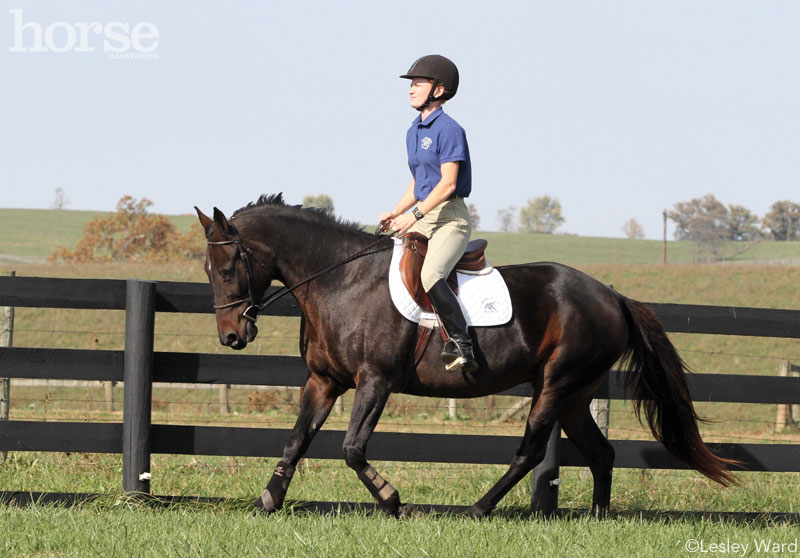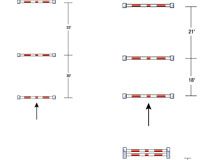
- The horse is unbalanced. Many horses naturally tend to travel downhill, with their weight mostly on their front end. Others travel crooked, so they careen around turns counter-bent. When you climb on the back of an unbalanced horse and ask for a reasonably straight, comfortable canter, the horse resists these adjustments and trots instead.
- The horse doesn’t understand your cues or aids. A horse that lacks the fundamentals of arena work usually breaks into a rough gallop rather than a composed canter. As soon as you try to slow the horse down, either by increasing rein pressure or attempting to circle, the unschooled horse gets confused and breaks into a hurried trot.
- You’re the problem. Did your horse originally canter but now he’s stuck at the trot? Can someone else canter him easily, but your efforts are ineffective? Then your riding may be at fault. Without realizing it, you could be leaning forward (which upsets your horse’s balance), holding onto the reins for support (essentially applying the brakes) or using too little leg pressure (weak legs often translate into a dull horse).
Once you’ve considered the reasons behind your horse’s broken canter, you can determine the best strategy to get back in stride. That could mean investing in some training sessions, clinics or lessons for both you and your horse. Or you could need to spend more time in an arena focusing on the basics.
Always keep in mind that a horse has to be taught to canter (or lope) by building on fundamentals. Teach your horse to become supple through his head and neck so he’s soft and flexible in the mouth. School him to move laterally, away from leg pressure. Also, work on collecting and shortening his stride by walking and trotting in large circles before asking him to collect and slow at the canter. With patience and consistency, your horse’s broken canter can be fixed.
See more Horsemanship How-tos >>






What also could be a problem is the saddle. if the saddle doesn’t fit correctly, it makes it uncomfortable for the horse to canter, or do any gait.
I think that occasionally these are the problem but I think usually the horse is just disrespectful and doesnt want to canter. You should try going back and doing more groundwork exercises that get your horses feet moving. After that you just have to practice lots and lots of cantering and doing stuff like the cruising lesson in the Downunder Horsemanship Fundamentals series to get your horse cantering.
Thank you for these tips:)
And, yes, tack and saddle fit is always a nessecity to check, and it also could be lack of correct training that causes this problem.
Thanks!
Thanks for the tips! My horse constantly breaks to the trot, and these may help. I’ll be defenatly checking when I ride. 🙂 Although, it could be because she’s a tad lazy…
Thanks for the tips!!I will totally use these tips when i ride. My horse always breaks down to a trot.
And then there are some horses that are just out of shape! I can certainly tell if my favorite mount at the stable hasn’t been ridden all week because he gets out of breath after just one lap.
Good advice. But I agree with Dalal, your horse also has to be in shape! And not lazy!
Horses are naturally a little lazy, but it’s not their fault. They don’t (naturally) see the point in wasting their energy all at once. What if they had to run from something later? It’s just normal for them to not run if they don’t need to.
MAKES SENSE, BASICS